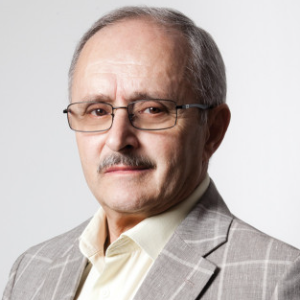Marlen Sulamanidze, Total Charm Clinic, Georgia
The integration of thread technology into gynecological practice represents a significant advancement in both aesthetic and functional treatment modalities. Originally utilized in dermatology for facial rejuvenation, absorbable threads such as polydioxanone (PDO), poly-L-lactic a [....] » Read More









Title : Pathologic findings in women with atypical glandular cells on Pap test
Neda Zarrin-Khameh, Baylor College of Medicine, United States
Introduction: It has been shown that a significant subset of atypical glandular cells (AGC) indicates underlying malignancies. Therefore, it is imperative to recognize, diagnose, and treat these lesions early. We evaluated the clinical significance of AGC on cervical cytolog [....] » Read More
Title : Pregnancy outcome after uterine artery embolization for uterine adenomyosis: A systematic review and meta-analysis
Mohamed M Hosni, London North West University Healthcare NHS Trust, United Kingdom
Uterine adenomyosis involves the growth of endometrial gland and stroma within the uterine musculature. Patients, with uterine adenomyosis, experience heavy painful periods, deep dyspareunia and subfertility, reducing their overall quality of life. Hysterectomy is usually the rec [....] » Read More
Title : Endometrial functions in recurrent pregnancy loss
Nicoletta Di Simone, Humanitas University Milan, Italy
Recurrent pregnancy loss (RPL) is a clinically challenging reproductive condition, and in a significant proportion of patients no identifiable cause is found using standard diagnostic work-up. Increasing clinical and experimental evidence suggests that endometrial dysfunction rep [....] » Read More
Title : What they don’t teach you about fibroids, the clinical gaps that fail patients every day
Ruthie Olumba, Aurdena Femme, United States
Despite the prevalence of fibroids worldwide, clinicians still face significant gaps in training that affect diagnosis, counseling, and long term management. In my years as a reproductive surgeon and fibroid specialist, I have seen how women living with fibroids struggle when t [....] » Read More
Title : Navigating women’s health: challenges, solutions and beyond
Okonta Rosemary Theresa Nkechi, Hermes, Germany
Women represents 50% of the population globally and 80% of purchasing decisions in healthcare are made by women. It is a common knowledge that women feel a pressure to be a “superwoman”- women feel the pressure to manage and juggle across all aspects of their life(i [....] » Read More
Title : Predictive models for personalized precision medical intervention in spontaneous regression stages of cervical precancerous lesions
Zhaoxia Wang, First hospital of Shanxi medical university, China
During the prolonged period from Human Papillomavirus (HPV) infection to cervical cancer development, Low-Grade Squamous Intraepithelial Lesion(LSIL) stage provides a critical opportunity for cerv [....] » Read More
Title : Non-ablative radiofrequency for pelvic floor dysfunction and female intimate anti-aging: a 6-month prospective multi-centre cohort objectiv
Shaadaiti Wufuer, First Affiliated Hospital of Xinjiang Medical University, China
Objective: To quantify safety and 6-month effectiveness of non-ablative radiofrequency (RF) on symptoms of pelvic floor dysfunction (PFD) and genitourinary syndrome of menopause (GSM) in women seeking intimate anti-aging. Methods?Three centres enrolled 208 women (45-65 y [....] » Read More
Title : Evaluate the changes in SP-D levels in plasma during different phases of the menstrual cycle recruited from the Well- Adult Surfactant Protein Study (WASP)
Natnicha Kitti udom, University College London, Thailand
Background: Surfactant Protein D (SP-D) is a protein of the innate immune system that plays a role in maintaining surfactant homeostasis, clearance of pathogens, and control of inflammation, primarily in the lungs (1). However, its presence in extrapulmonary tissues, including th [....] » Read More
Title : Assessment of exclusive hypo-fractionated post-mastectomy radiation in patients with locally advanced breast cancer.
Hiba Siddiqui, Dr. Ziauddin Hospital, Pakistan
Breast cancer has a relatively low α/β ratio, estimated around 3–4 Gy. This suggests a heightened sensitivity to larger fraction sizes, thereby providing a strong radiobiological rationale for hypo-fractionation. The objective of this study is to evaluate whether [....] » Read More
Title : Benign gynecological conditions and lifetime contraceptive patterns: a population-based analysis of the 2022–2023 national survey of family growth
Mayi Gnofam, Stony Brook University, United States
Background Selecting an appropriate contraceptive method is often a dynamic, trial-and-error process shaped by medical, behavioral, and contextual factors. Although side effects and early discontinuation are common among healthy women, those living with benign gynecological di [....] » Read More
Title : Examining the impact of advanced paternal age on obstetrical and fetal outcomes
Sakshi Das, State University of New York Downstate College of Medicine, United States
Advanced paternal age (APA), defined as 40 years or older at time of conception, is associated with poor outcomes with assisted reproductive technologies. Review of literature suggests APA may be associated with infertility, miscarriage, preterm delivery, and placental abnormal [....] » Read More
Title : Comparing multiple measures of body mass as predictors for testosterone and estradiol levels in men
Kayla Schacher, SUNY Downstate Health Sciences University, United States
Prior studies have shown that increased body mass in men is associated with decreased levels of testosterone and increased levels of estradiol. These hormone alterations can lead to fertility issues. Body mass can be measured as body mass index (BMI, kg/m2), waist circumference [....] » Read More
Title : PCOS and Pinays: A cross-sectional study on the association ofiIllness perception and health behavior of Filipino women aged 18-45 with polycystic ovarian syndrome
Cyrus Christian B Lee, University of the East Ramon Magsaysay Memorial Medical Center, Philippines
Polycystic Ovarian Syndrome (PCOS) is a common endocrine disorder associated with metabolic, hormonal, and reproductive complications that affects millions of women of reproductive age in the Philippines. Cultural factors and healthcare access in the Philippines may shape how Fil [....] » Read More
Title : MRI case report of the rare ovarian mucinous cystadenoma and fibroma collision tumor.
Shereen Abdelraouf, Faculty of Medicine Cairo university, Egypt
A collision tumor is defined as the presence of two distinct tumor types without any histological intermixing of the individual cell types. They have been commonly reported in various organs, such as the oesophagus, stomach, skin, lungs, liver, adrenals, thyroid and uterus. It is [....] » Read More
Title : A meta-synthesis of women’s experiences of body image across the perinatal period.
Geetika Balchandani, Royal College of Surgeons Ireland, United Kingdom
The perinatal period involves profound biopsychosocial changes, during which a women’s body image is shaped by societal ideals of femininity, identity roles and expectations of motherhood. A previous meta-synthesis highlighted that women’s experiences of their pregnan [....] » Read More
Title : Chemoprotective effects of plasma derived from mice of different ages and genders on ovarian failure after cyclophosphamide treatment
Soghra Bahmanpour, Shiraz University of Medical Sciences, Iran (Islamic Republic of)
Premature ovarian failure is one of the major side effects of chemotherapy drugs. Blood plasma contains several factors that might lead to the repair of different tissues. Objective: The chemoprotective effects of plasma derived from mice with different ages and genders were asse [....] » Read More